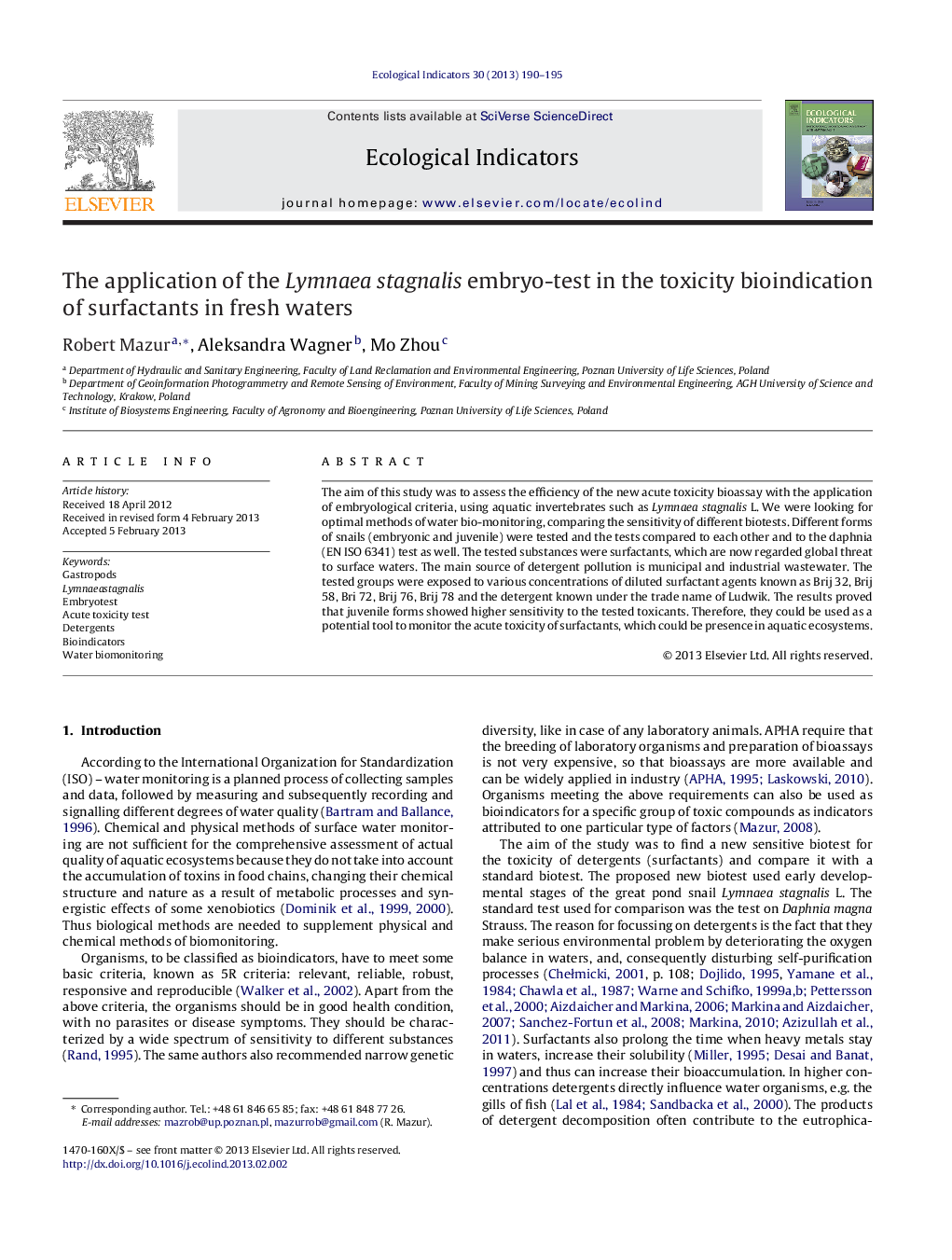| کد مقاله | کد نشریه | سال انتشار | مقاله انگلیسی | نسخه تمام متن |
|---|---|---|---|---|
| 4373438 | 1617170 | 2013 | 6 صفحه PDF | دانلود رایگان |

The aim of this study was to assess the efficiency of the new acute toxicity bioassay with the application of embryological criteria, using aquatic invertebrates such as Lymnaea stagnalis L. We were looking for optimal methods of water bio-monitoring, comparing the sensitivity of different biotests. Different forms of snails (embryonic and juvenile) were tested and the tests compared to each other and to the daphnia (EN ISO 6341) test as well. The tested substances were surfactants, which are now regarded global threat to surface waters. The main source of detergent pollution is municipal and industrial wastewater. The tested groups were exposed to various concentrations of diluted surfactant agents known as Brij 32, Brij 58, Bri 72, Brij 76, Brij 78 and the detergent known under the trade name of Ludwik. The results proved that juvenile forms showed higher sensitivity to the tested toxicants. Therefore, they could be used as a potential tool to monitor the acute toxicity of surfactants, which could be presence in aquatic ecosystems.
► Acute toxicity studies on Lymnaea stagnalis embryos and juveniles after hatching.
► Acute toxicity tests for detergents Brij.
► Brij 35 – polyoxyethyleneglycol dodecyl ether, Brij 58 – polyoxyethylene 20 cetyl ether, Brij 72 – polyoxyethylene (2) stearyl ether, Brij 76 – polyoxyethylene (10) Stearyl Ether, Bri 78 – polyoxyethylene (20) stearyl ether.
► Development of methods for biological monitoring of freshwater quality.
Journal: Ecological Indicators - Volume 30, July 2013, Pages 190–195